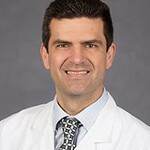- Adult Heart DiseaseDiseases of the arteries, valves, and aorta, as well as cardiac rhythm disturbances
- Pediatric and Congenital Heart DiseaseHeart abnormalities that are present at birth in children, as well as in adults
- Lung, Esophageal, and Other Chest DiseasesDiseases of the lung, esophagus, and chest wall
- ProceduresCommon surgical procedures of the heart, lungs, and esophagus
- Before, During, and After SurgeryHow to prepare for and recover from your surgery
June 18, 2019

Multiple variables influence the way patients recover from lung cancer surgery—some variables relate to the patient; others relate to the surgery itself.
Variables associated with the patient include the number of cigarettes smoked, presence of pneumonia during the 90 days before surgery, steroid use, total number of daily medications, cardiovascular disease, respiratory issues, hormonal problems, renal failure, diabetes, immunosuppression, pulmonary function, obesity, anemia, and the ability to walk without shortness of breath.
Recovery also depends on whether the operation was minimally invasive (performed without the use of rib retractors), its complexity, the amount of lung removed, complications, postoperative pain management, and the quality of the team involved in the patient’s recovery (surgeons, nurses, respiratory therapists, and physical therapists).
At my institution, the University of Miami Health System, more than 80% of lung cancer surgeries are performed with minimally invasive robotic surgery. The average hospital stay is 3 days, and recovery at home usually takes no more than 1 to 2 weeks. Standardization of perioperative management, with protocols for prompt recovery and reduced use of narcotics, has made it possible for patients who are 80 years or older to undergo this type of surgery with similar results as younger patients.
At the end of the surgery, a drainage tube is placed in the patient’s chest to clear air and fluid. Another tube is inserted in the bladder to drain urine. Usually, the urine tube is removed the day after surgery and the chest tube 1 or 2 days after surgery.
My patient, Omar Marchant, described his experience:
As I turn 84 years old, I give thanks for the advances, dedication, and professionalism that surrounded me when I selected the University of Miami Health System to treat my lung cancer.
During exploratory surgery, cancerous nodules were detected and confirmed in my left lung, and it was necessary to extract my superior lobe. The operation was an absolute success, as was my recovery, thanks to the supervision of a great team during my hospital stay and after I went home.
I always have loved exercise, especially walking. The day after my surgery, I was able to walk the hospital corridors, accompanied and supervised. When I returned to my room and laid on the bed, I felt like the happiest man in the world. I was full of energy and the will to live.
The drainage tube in my chest was removed the second day after surgery, as was the tube monitoring my urine output. After urinating on my own and having x-rays to check my lungs, Dr. Villamizar discharged me home.
Two weeks after surgery, with Dr. Villamizar’s consent, I was already taking my usual walks and feeling better every day. It has been a year since my surgery, and I am able to continue my usual exercises, walking an average of 25 miles a week. I have never had trouble breathing or any other adverse symptoms.
During most of my youth, I was a heavy smoker; I quit smoking completely in 1980, but the damage was already done. The vice of cigarettes and the damage they cause in our lungs really are a disgrace.
I have this advice for ex-smokers or people who have lung cancer from other causes: Noninvasive thoracic surgery is extremely advanced, and thoracic surgeons are truly dedicated to their patients and prepared for any eventuality that may arise. Do not fear lung cancer surgery.
I take care of myself and hope to reach 95 years old or, who knows, maybe a little more.
Read more about Before, Day of, and After Lung Cancer Surgery.
The opinions expressed in this article are those of the authors and do not necessarily reflect the views of The Society of Thoracic Surgeons.

